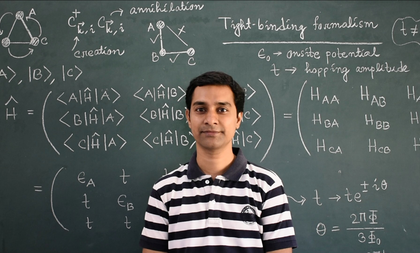Nagaland University’s new research to aid advancement of quantum tech for devices, algorithms
By IANS | Updated: September 16, 2025 12:15 IST2025-09-16T12:09:29+5:302025-09-16T12:15:06+5:30
New Delhi, Sep 16 Making significant strides in the field of quantum technology, researchers from Nagaland University have ...

Nagaland University’s new research to aid advancement of quantum tech for devices, algorithms
New Delhi, Sep 16 Making significant strides in the field of quantum technology, researchers from Nagaland University have replicated the complex patterns of fractals found in nature -- such as snowflakes, tree branches, and neuron networks -- in the quantum world.
With India already committed to advancing next-generation technologies through the National Quantum Mission, the new research could contribute meaningfully to the development of future quantum devices and algorithms, said the team
Fractals are not just mathematical curiosities, but blueprints found across nature -- from the branching of rivers and lightning strikes to the growth of plants and neurons.
The findings will help researchers explore how amorphous non-crystalline materials can be engineered for quantum technologies, thereby expanding the material base for India’s and the world’s quantum innovation efforts.
“Fractals are naturally occurring patterns that repeat themselves at different scales, seen in structures like coastlines, leaves, and blood vessels. In this research, I have used quantum mechanics to simulate how electrons behave under a magnetic field within such fractal systems. This approach is unique because most research in quantum devices relies on crystalline materials,” said Dr. Biplab Pal, Assistant Professor, Department of Physics, School of Sciences, Nagaland University.
“This work shows that non-crystalline, amorphous materials can also be effectively used to design nanoelectronic quantum devices,” he added.
The researchers noted that the study opens exciting possibilities in quantum devices: designing molecular fractal-based nanoelectronic devices.
It may also aid in quantum algorithms and information processing: better control over electron states for future computing applications; and Aharonov-Bohm Caging effect: trapping electrons in fractal geometries, a phenomenon that could be harnessed in quantum memory and logic devices.
The study has been published in the peer-reviewed international scientific journal Physica Status Solidi – Rapid Research Letters.
Disclaimer: This post has been auto-published from an agency feed without any modifications to the text and has not been reviewed by an editor
Open in app